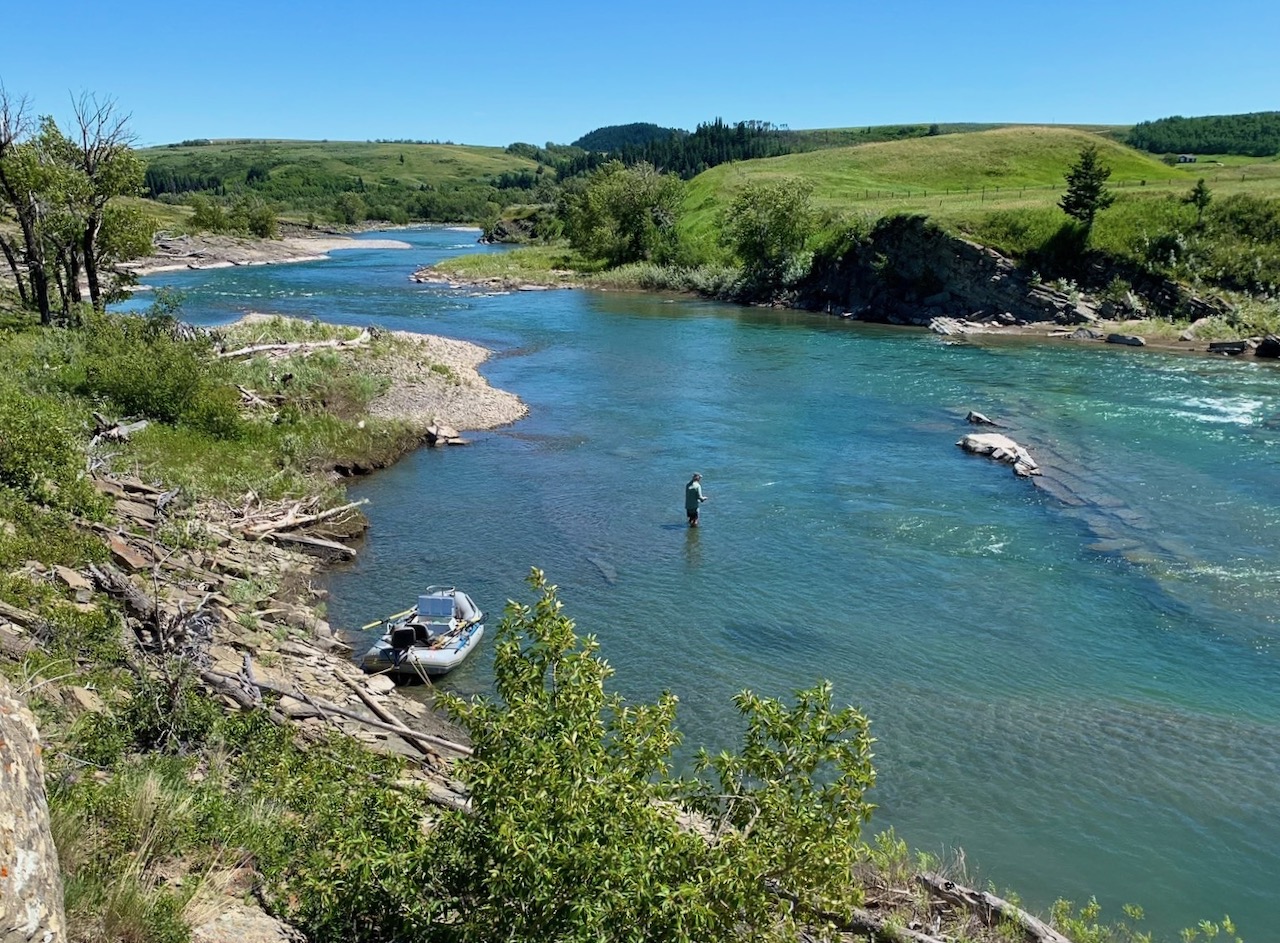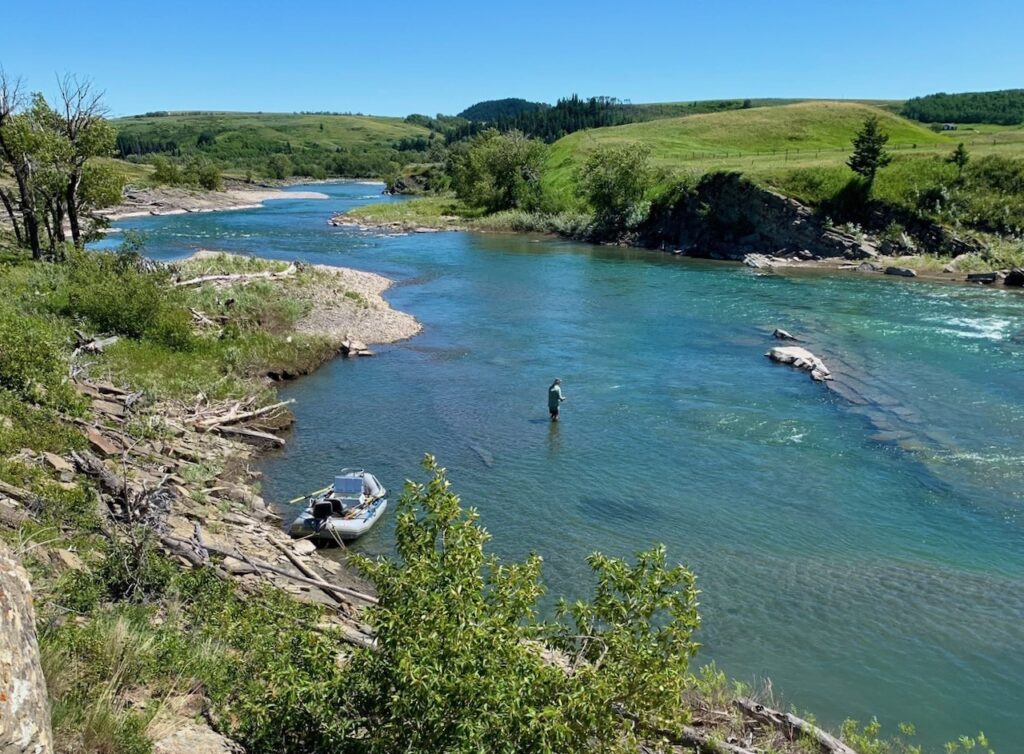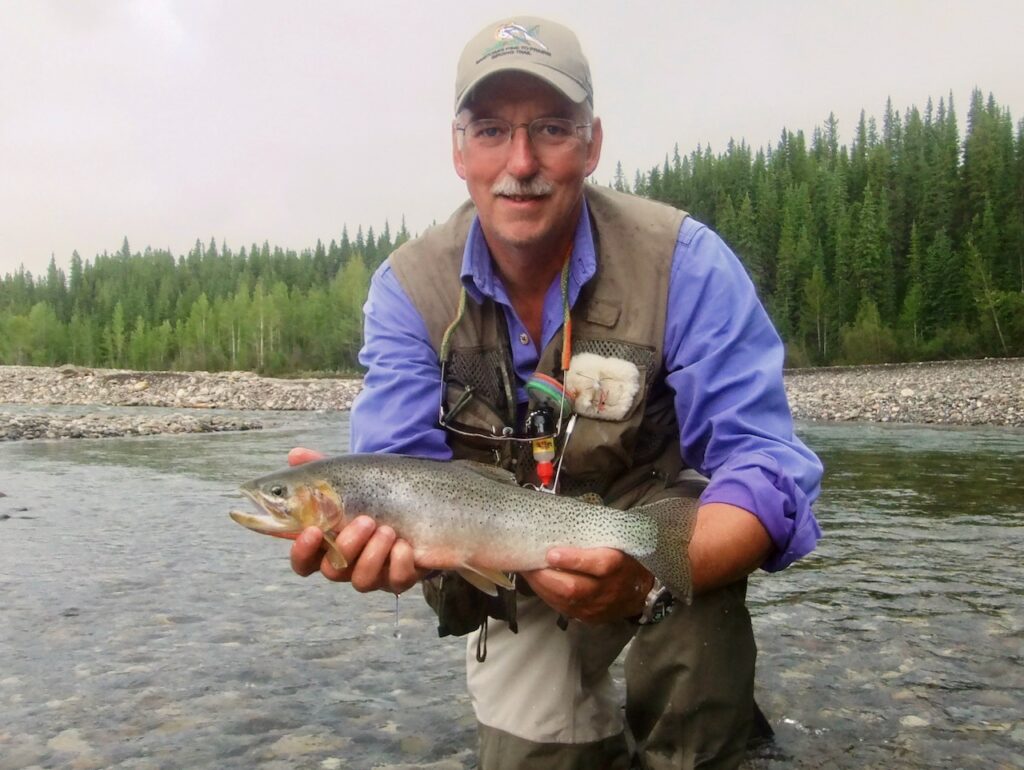A craving for Crowsnest Country
The allure of southwestern Alberta’s fabled trout streams keeps this angler coming back, year after year
Advertisement
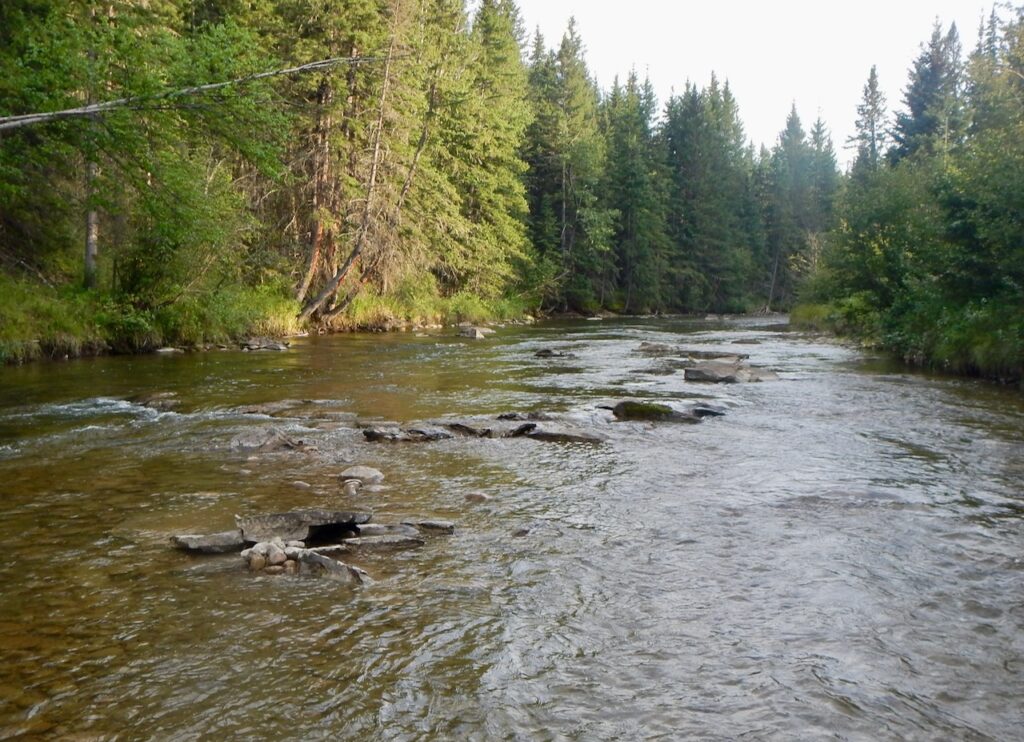
THE CROWSNEST RIVER
Many experienced anglers would say the eponymous river that gives this region its name (or is it the other way around?) is Alberta’s premier trout stream. It would be hard to argue otherwise, as it offers everything you could want in a trout stream: it’s big enough to hold large fish, yet small enough to wade, and in most sections you can cast across it; it’s chock full of big pools, long runs and gurgling riffles; the insect life is prodigious, meaning it has lots of available trout food; and set beneath the Rocky Mountain ramparts, it features a spectacular backdrop. Perhaps most attractive to anglers, the river affords excellent access and enough water that you can usually find a stretch all to yourself.
The Crow, as it’s often referred to by anglers, has three defined sections, each with its own charms. The upper section extends from Crowsnest Lake just east of the B.C. border to the community of Frank, site of a horrific landslide. In 1903, an estimated 90 people died and much of the local coal mining infrastructure was destroyed and buried under tonnes of rubble, the frightening remains of which can be seen to this day. In this section, rainbow trout and Rocky Mountain whitefish are the primary species. The fish here tend to be smaller than those found further downstream, a result of the gradient, channelization and less food, but they are still plentiful and there’s minimal angling pressure.
Advertisement
The section from Frank downstream to Lundbreck Falls is probably the most popular. The river valley here is remarkably wild considering its close proximity to the highway and the large number of farms and houses, both year-round and seasonal, that populate its banks. Thanks to the many bridges and the local landowners’ understanding of angler culture, there’s plenty of access along this reach. You can usually find yourself a little alone time, too, if you’re willing to put a few hundred metres on your waders (I even bumped a black bear in the thick streambank willows this past September, which is not an unusual occurrence). This section is again largely populated with rainbows and rockies, with really good numbers of large fish—16- to 20-inch trout are common, and even larger fish are caught with remarkable regularity.
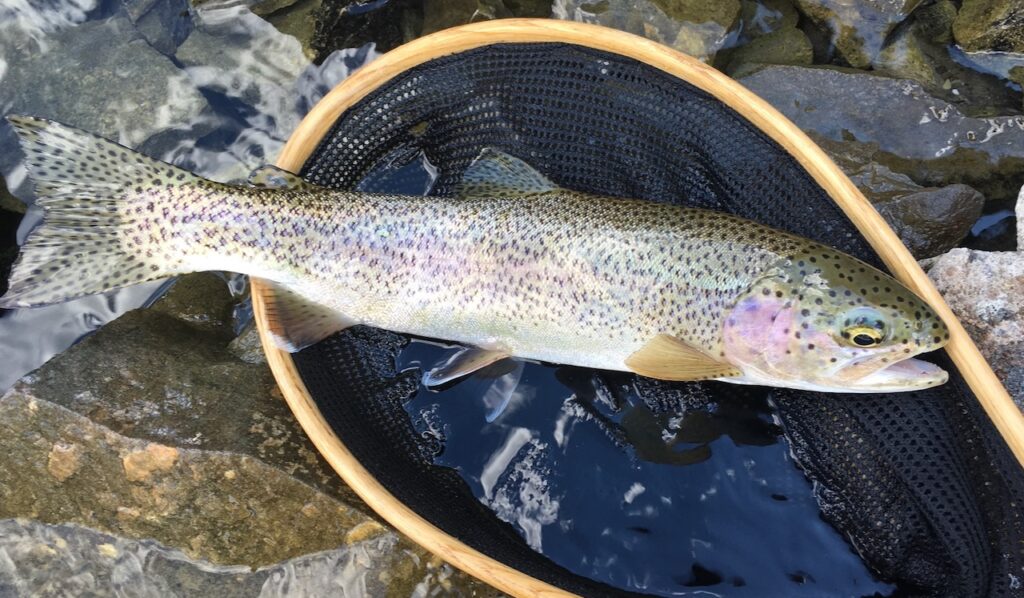
It’s from Lundbreck Falls down to the Oldman River Reservoir, however, that the Crowsnest’s reputation grows in lockstep with its size. The river is wider here, more open, and home to a greater diversity of fish. Rainbows and whitefish are still the most common species, but browns and bulls can also be had, including some pretty large specimens. This section can be very busy at times, but persistence pays off in the form of good numbers of large fish.
Below Frank, the Crow is highly productive, boasting a diverse array of hatches that anglers chase throughout the season. The most notable of these is the revered salmonfly hatch between late May and mid-June. These humungous stoneflies have a way of turning otherwise cautious trout into reckless marauders hell-bent on an easy and filling meal. Unfortunately, the hatch is concurrent with the spring runoff most years, meaning the water tends to be high and muddy. Hitting the salmonfly hatch just right is the exception rather than the rule, but it happens just often enough to keep the legend alive in the fly-fishing community.
Advertisement
Of the three primary rivers in Crowsnest Country, the Crow has the fewest number of fishable tributaries. Where the tribs can be fished, they tend to only hold small—yet often numerous—rainbows and rockies.
Advertisement
THE CASTLE RIVER
As with the Crowsnest, think of the Castle system as a triad. The river proper results from the merger of two distinct trout rivers near the hamlet of Beaver Mines, the South Castle and the West Castle. The larger of the two, the South Castle is predominantly a cutthroat stream, with a smattering of bulls and reasonable numbers of rockies. The largest cutthroat ever recorded in Alberta—a nine-pound nine-ounce beauty—was caught here in 1998.
As with all cutthroat streams, the South Castle is blessed with cool, clear waters. Access is limited, but intrepid anglers will have little problem finding water to fish if they’re willing to do a little walking; my wife, Jane, and I fished it late last summer and didn’t encounter another angler all day.
It’s difficult to become overly familiar with either the South or West Castle, as they’re continually in flux; spring runoff moves logjams around and creates new pools and banks on an annual basis. But rest assured, whenever and wherever you fish on the South Castle, you’ll find enough pool habitat to keep things interesting.
Though smaller than the South Castle, the West branch is more popular with anglers, particularly downstream of Castle Mountain Resort, Alberta’s second-largest ski area, renowned for its long, steep runs and consistent snowfall. Cutthroats predominate here, too, but you’ll also find rainbows, bulls and rockies. The lower sections attract more anglers largely because of the easier access and easier fishing.
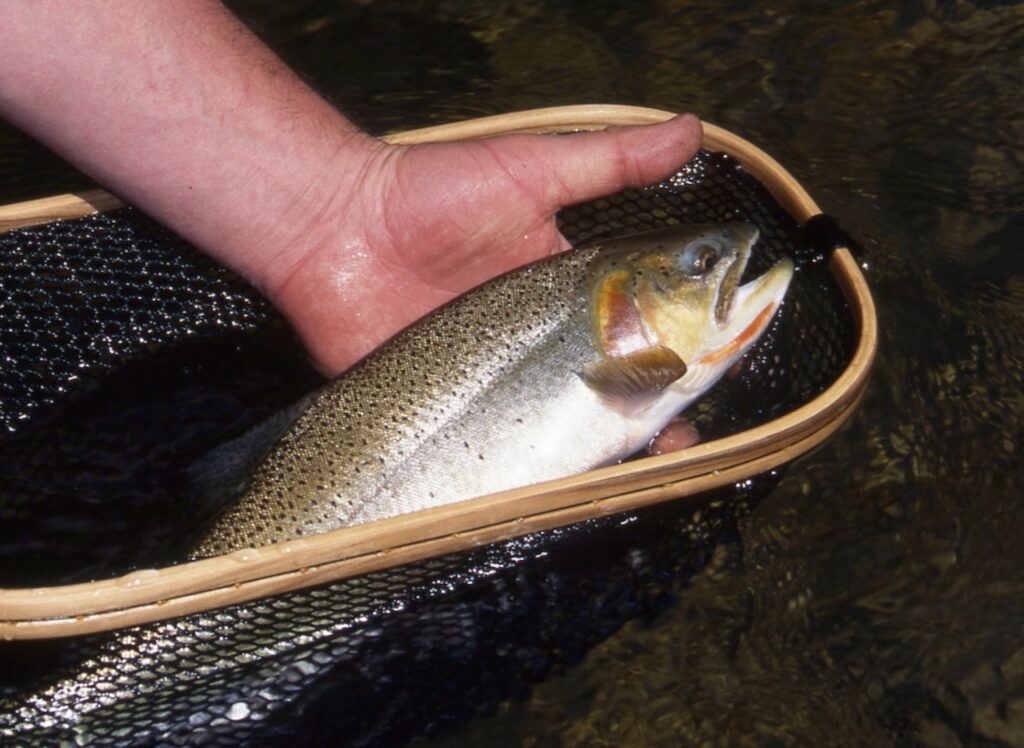
Upstream of the ski resort, meanwhile, the river is narrow, and many sections are shrouded by tree cover that can make casting difficult. Anglers willing to brave those challenges, however, can be rewarded with a remote, wilderness experience and steady numbers of fish. Just be sure to carry bear spray, as this region boasts a thriving grizzly bear population.
I’ve long enjoyed the Castle River below the confluence of the South and West branches. It holds rewarding numbers of hefty cutts in the upper stretches, with rainbows more common in the lower reaches; bulls and rockies can be found throughout. Access is somewhat limited, with most anglers fishing from the few bridges that cross the river, or by gaining access across private land.
There’s a canyon section extending about two kilometres near the halfway point that is near impossible to wade. As a result, many anglers float this wild and woolly section in inflatable rafts with rowing frames. This requires a little effort and a commitment to several hours on the river, but the angling pressure is minimal and the immense pools hold broad-shouldered cutts and some lunker bull trout.
The Castle system has several tributaries that are definitely worth fishing, including Mill, Beaver Mines and Carbondale Creeks. One late-August day two years ago on Mill Creek, a huge rainbow took Jane’s Stimulator as she drifted it through a large pool. Realizing it was hooked, the trout leapt skyward, revealing itself to be at least 22 inches long. Jane was so surprised she clamped down on her line and the fish broke off, making for a heart-breaking lesson in her development as a fly angler.
The Carbondale, meanwhile, reminds me of the Livingstone, and I’ve enjoyed some wonderful days there catching cutts, rainbows and hybrids of the two. It’s the ideal size for walk-and-wade fishing, and the holding cover is plentiful and obvious. The Carbondale’s tributaries, including Lost and Lynx Creeks, are also worth exploring.
THE OLDMAN RIVER
There are no bad places to fish the Oldman River. Of the three river systems that make up Crowsnest Country, it has by far the most fishable water. Emerging high in the Rockies, it races southeast until it escapes the clutches of the mountain range through the narrowing of the Livingstone Gap. Below “the Gap,” as everyone refers to it, the Oldman slows and broadens, continuing southeast before spilling into the Oldman Reservoir and joining waters from the Crowsnest and Castle. While the construction of this irrigation reservoir in the early 1990s flooded many kilometres of prime trout water on all three rivers, at least a tailwater fishery was created below the dam.
Above the Forestry Trunk Road, meanwhile, the Oldman is a typical high-altitude freestone stream, populated with cutthroats, bulls, a few rainbows and, of course, the omnipresent Rocky Mountain whitefish. While not as large as those farther downstream, the cutts here are numerous and hungry. Searching pocket water with dry flies consistently produces fish, especially later in the summer.
My favourite stretch lies between the Gap and the Highway 22 bridge. The river here is a little broader and slower, and the pools and the fish are larger; you’ll find more rainbows and fewer cutthroat as you get closer to the bridge. Access through this section is somewhat limited, as most of it is bounded by private land. Some property owners are generous with granting access, while others are less so. The most popular reach is right below the Gap. It’s easy to access via crown land, and there’s no shortage of trout-holding water. In fact, you can fish all day and not have to wade more than a few hundred metres up- or downstream.
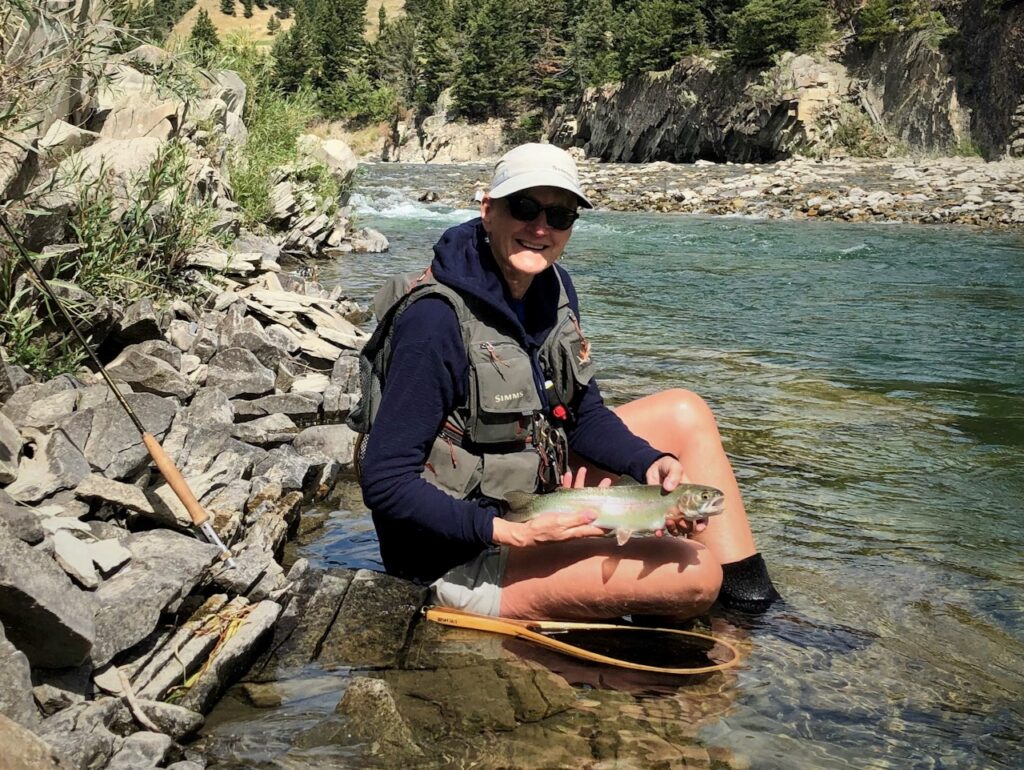
The section from Highway 22 down to the reservoir is similar, but access is even more limited—restricted to a couple of bridges—and the water slows as it approaches the reservoir. Many anglers drift this section. There are good numbers of trout throughout, and some damn big ones, but to get out of the river once you reach the reservoir, you need to row or use an electric motor.
I have yet to fish the tailwater below the dam. The fishable water here is relatively short, just under 10 kilometres before the river enters Piikani Nation reserve lands, where fishing is not allowed. Anglers who have fished this reach tell me there are good numbers of rainbows, which is more than enough to make the effort worthwhile.
The Oldman also has some wonderfully productive tributaries, the most popular of which is my beloved jumping off point, the Livingstone River. Though smaller, Racehorse and Dutch Creeks also always make for good fun, with cutthroats in nearly every fishy-looing pool. No wonder I can’t wait to get back.
Outdoor Canada’s hunting editor Ken Bailey is also an avid fly angler.

